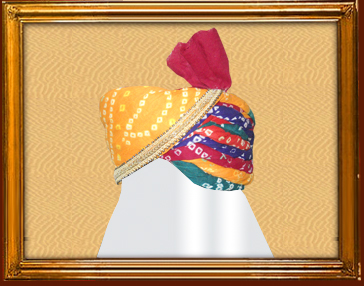
Pagdi
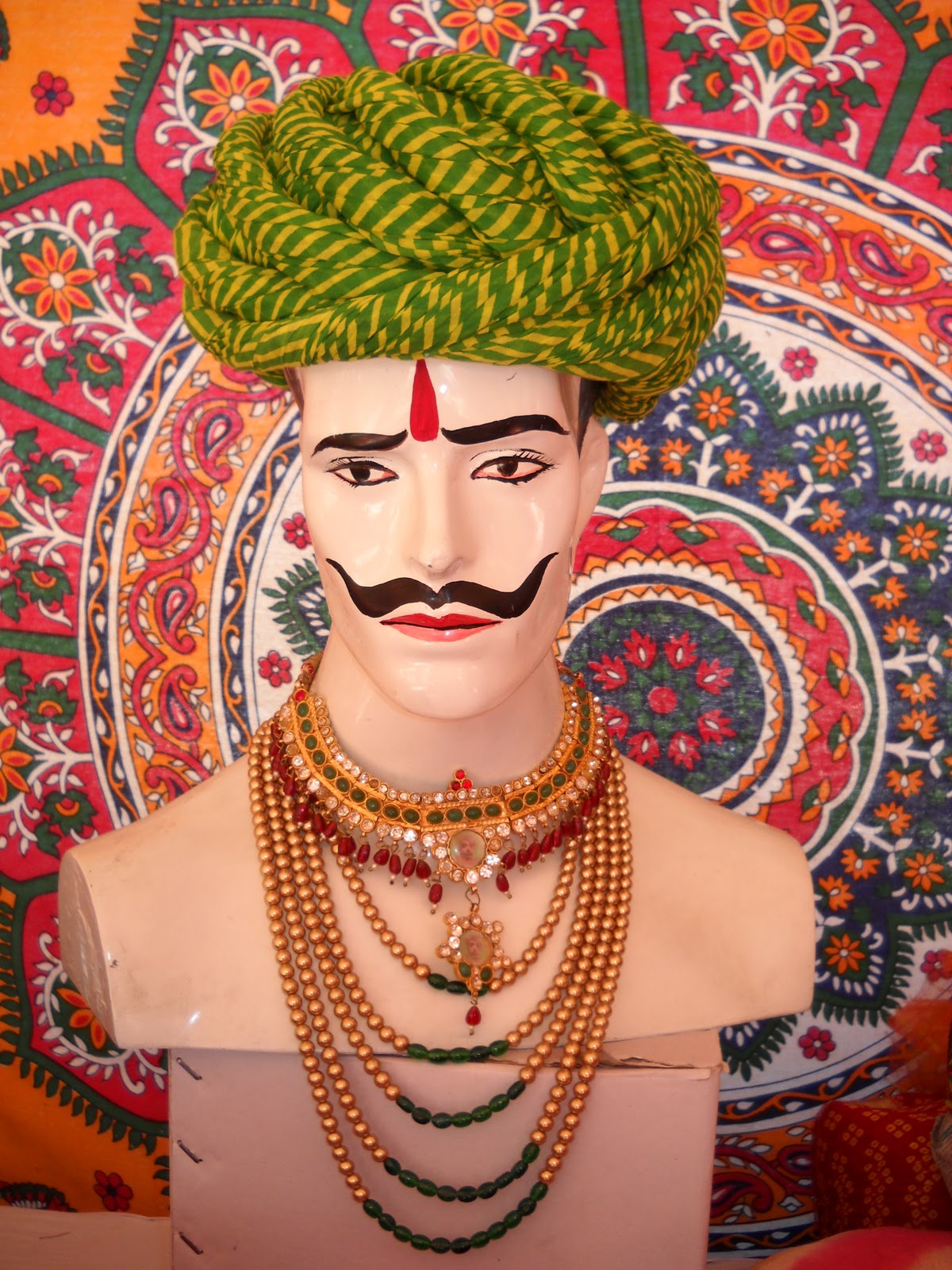
Rajasthani Pagdi
Just as the Indian bride is incomplete without the traditional bridal attire and jewelry, the Indian groom’s ensemble is incomplete without the traditional turban, also known as the pagdi or safa. The turban is the prominent headgear that lends the groom the quintessential bridal look and has been an inherent part of our culture and tradition for centuries. Different parts of India have different types of pagdis ranging from the Topor in West Bengal to the Pheta of Maharashtra. Whatever the color or form- the pagdi is the most distinguishing feature of a groom’s outfit in India which adds an element of royalty to the ensemble.
The original pagdi extends up to 82 inches in length and is around 8 inches wide. The safa on the other hand is much shorter but broader. The typical fabrics that constitute a typical pagdi range from zari, chuneri, silk cloth or ghar chola. The most typical style of pagdi in Punjab is the ‘Bandhani style’ wherein the pagdi is embellished with dubka work and beads along with the ornamental ‘Kalgi’ which is a studded brooch affixed to the front side of the pagdi.
There are various other pagdis that are made with a long tail and a small horn-like shape at the front- which reminds us of the royal ensembles. It is found in Rajasthan and is a royal heritage of the capital city – Jaipur. Such pagdis are made up of local Jaipur print or Bandhani fabric and is further embellished with zari work, gems, and beads. This is the pagdi that you are most likely to find in Rajasthani weddings, which resembles what the Maharajas used to wear in the bygone eras. The safa is commonly worn in Rajasthani weddings.
Origin
It is a rich part of Indian heritage and has been worn since centuries. These were originally manually tied, although ready-made ones are available as well now. Each region has its own pagdi which is specific to the culture of the state and has a different look. Pagdis are associated with nobility, respect and honor.
Style & Attire
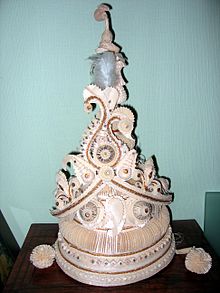
Topor
Pagdis are differently tied and are of different color combinations in different parts of the country or state. For instance, in Jodhpur, the Rajputs don pagdis which five different colors called the Panchrangi turban. In West Bengal, the groom wears a topor which is a head gear that has a conical shape. It is made out of sholapith and is ivory white in colour. The topor is usually given by the bride’s family and it is said to bring good luck to the groom.
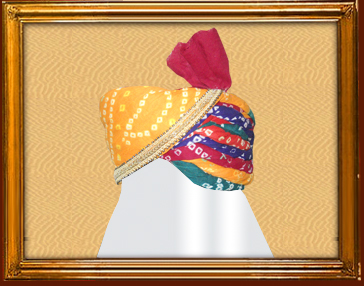
Panchrangi Turban
The other styles include those found in Maharashtra, like the Kolhapuri pagdi, the Puneri Pheta and the Mawali Magadi. Another popular style of pagdi is the Mahatma Phule pagdi which gets its name from the Maharastrian reformer. However, the pagdi in Maharashtra is commonly known as the Pheta. Another very different style is the Mysore Peta which is worn in Kodagu and Mysore.
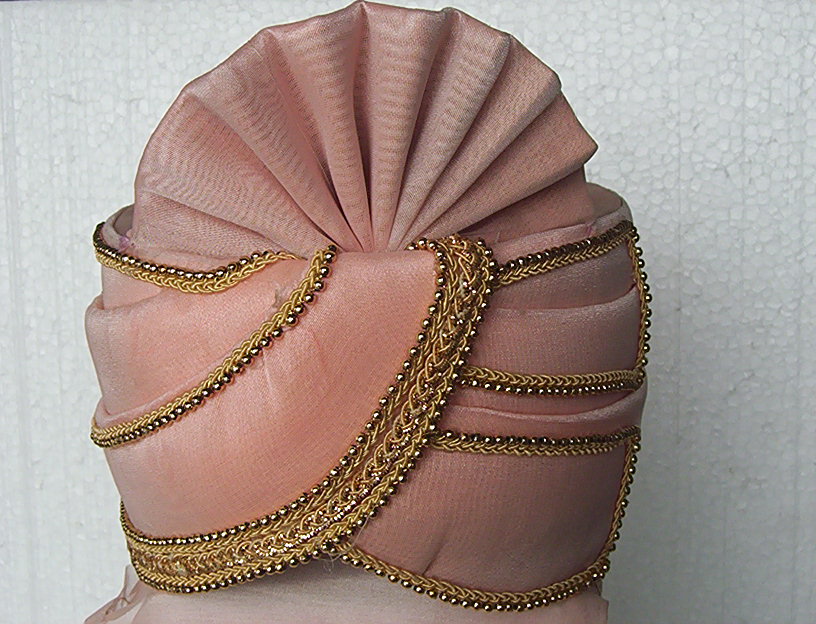
Pheta
The Trendsetter
A turban or pagdi is essentially the pride of an Indian groom and there is a lot of importance attached to it as the groom is supposed to dress up regally on his wedding day. A couple of years back, the rich turban element in weddings was slowly dying out. However, thanks to Bollywood cinema and high profile weddings- the trend is slowly making a re-entry into common Indian weddings in a big way.
The most popular pagdi to have been worn by a Bollywood actor was the flower-laden pagdi worn by Abhishek Bachchan on his wedding day. It was the perfect traditional pagdi which was made out of resplendent white and gold brocade and was adorned with a thick canopy-like sehara. Since then, the trend fast caught on and it made their comeback in a flamboyant way.
Accessorizing
The modern day pagdi is made in a customized fashion, matching the groom’s outfit. It is also embellished with stones, zari work and other adornments to make it an eye-catching piece. The most prominent accessory that enhances the look of the pagdi is the ‘sarpench’ which is an embellished brooch that is affixed onto the pagdi near the center along with a ‘morpankh’, a peacock feather. These two elements complete the look of the groom’s pagdi.
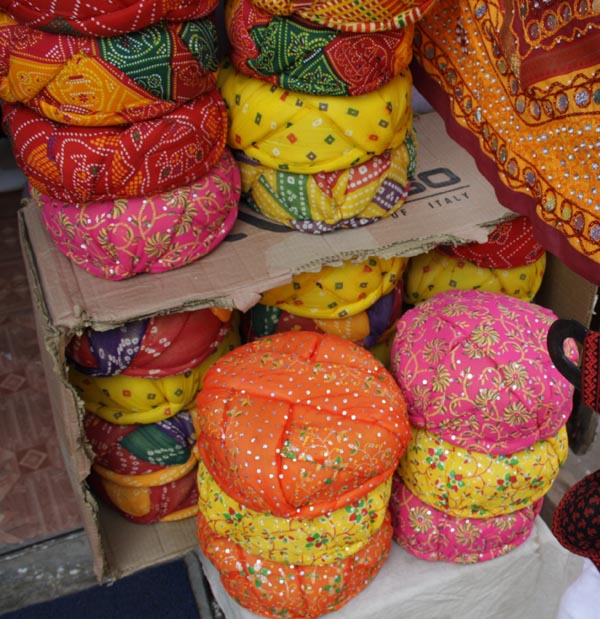
Rajasthani Turban
References
Categories: Attires, Costume Accessories
